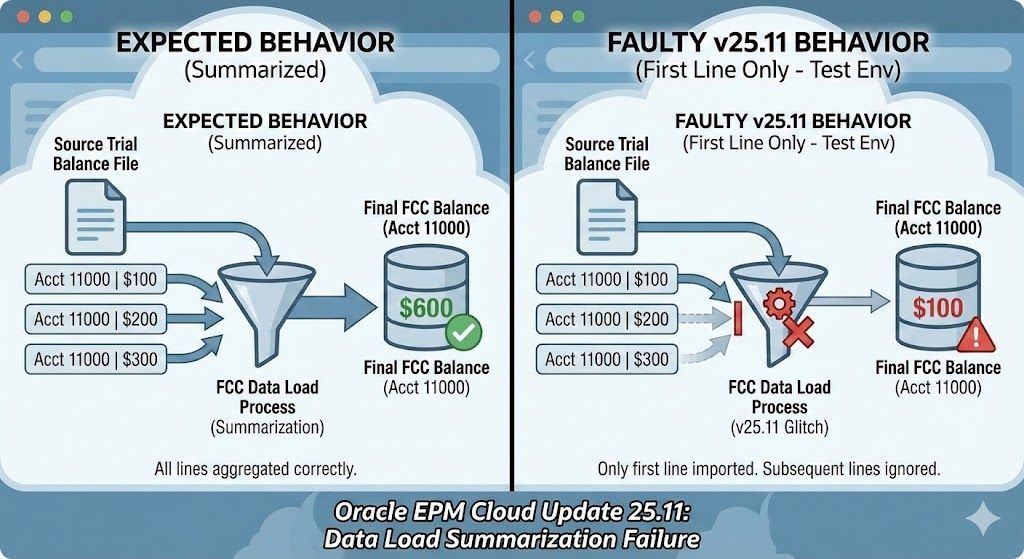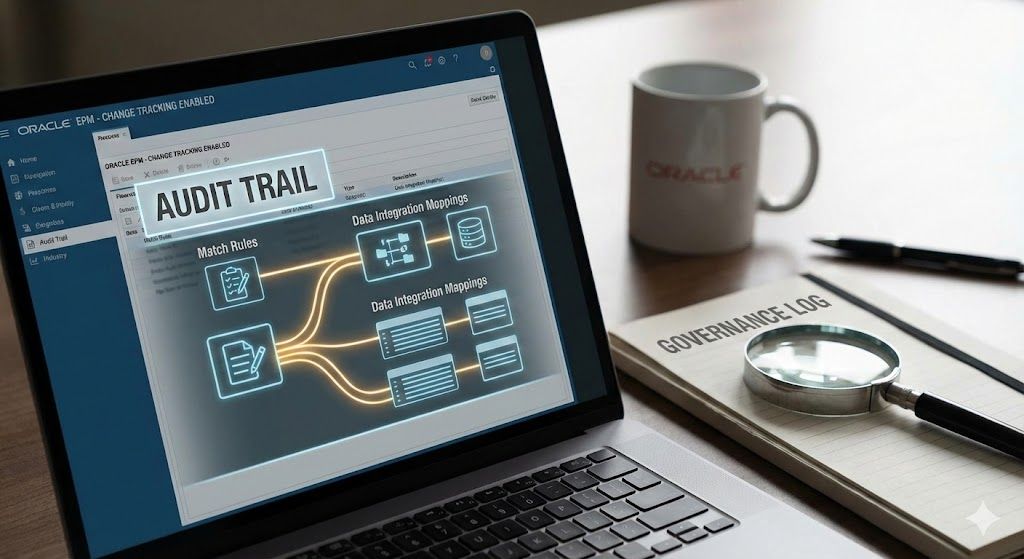Oracle's Big Move on XBRL: What the New Enhanced Integration Means for You
Nadia Lodroman | Oracle EPM Consultant | Integrity in Every Insight.
21 September 2025
Listen to Tresora and Ledgeron's chatting about this blog post:
What the New Enhanced Integration Means for You
For anyone in the world of finance and compliance, the story of XBRL (eXtensible Business Reporting Language) within Oracle's EPM Cloud has been one of evolution. If you've been following along, you'll know that Oracle has shifted its strategy over the years. Now, another significant change is here, and it’s a pivotal moment for many users.
Oracle is rewriting the script once again with its new Enhanced XBRL Integration
for Narrative Reporting, and it’s a change you need to understand.
A Quick Look Back: The 2021 Pivot
To understand where we are, we have to remember where we've been. In 2021, Oracle made the strategic decision to discontinue the native XBRL functionality within its Narrative Reporting
application. The official recommendation was to partner with third-party solutions, such as Ez-XBRL, to handle complex taxonomy and tagging requirements.
This move meant that new customers had to find and manage a separate compliance application for critical filings like SEC reports, annual financial statements, and tax returns. While functional, it added a layer of complexity and an extra vendor relationship to the reporting process.
The New Chapter: Enhanced XBRL Integration
Fast forward to today, and Oracle has introduced a powerful solution: a direct, enhanced integration with third-party XBRL providers, built right into the Enterprise Narrative Reporting application.
So, what does this actually mean?
Instead of a completely separate process, the new functionality allows you to establish a direct, API-based connection between your Narrative Reporting environment and your chosen XBRL service.
The key benefits are:
- Direct Connection: You can now establish a direct link between your Narrative Reporting environment and your chosen XBRL provider.
- Seamless Data Transfer: Key reporting properties are passed through a URL, allowing the XBRL service to easily extract and load your report content.
- Iterative Refresh: One of the most significant advantages is the ability to refresh the report content iteratively. This means you can make changes in Narrative Reporting and push them to your XBRL provider without losing any of the XBRL tagging that has already been completed.
This enhanced integration streamlines the "last mile" of financial reporting, making the entire process smoother and less prone to error.
The Big Question: Who Gets This New Feature? (And Who Doesn't)
This is the most critical part of the announcement. The new Enhanced XBRL Integration is available exclusively
for users of the Enterprise EPM edition
of Narrative Reporting.
Users of the Standard edition
or the legacy EPRCS (Enterprise Performance Reporting Cloud Service)
will not have access to this functionality. They will need to continue using their existing processes and third-party tools without the benefit of this direct integration.
Is It Time to Re-evaluate Your EPM Strategy?
If your organization is currently using two or more legacy Oracle EPM applications (like Hyperion Financial Management, Planning, etc.) or if you're on the Standard EPM edition, this development should be a major signal. The gap in functionality between the Standard and Enterprise tiers is widening, especially in critical areas like compliance.
This is the perfect time to re-evaluate your future state. Consolidating onto the Oracle Enterprise EPM edition could make tremendous financial and operational sense for your company. An upgrade not only gives you access to this streamlined XBRL functionality but also unlocks a wider range of advanced capabilities across the entire EPM suite.
Feeling unsure about your options or what an upgrade path looks like? Let's talk. Contact Nadia Lodroman
at www.lodroman.com to have a practical discussion about your company's needs and see if a move to Enterprise EPM is the right strategic step for you.
Turning financial complexity into operational clarity. Because in Finance, Integrity is Permanent.






